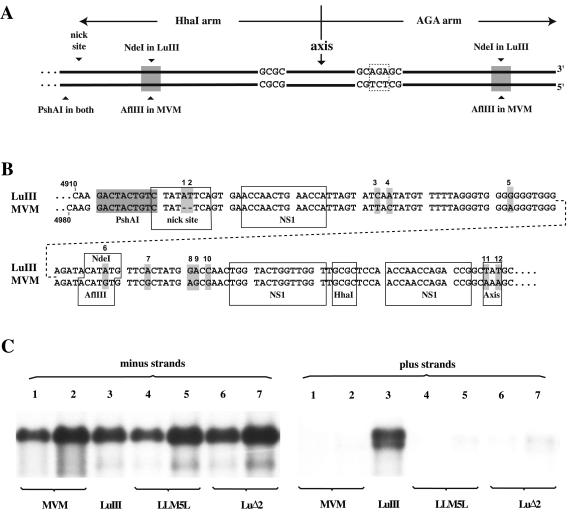FIG. 2.
The ability to package positive-sense DNA maps to the nick site of the right origin. (A) Diagram of the right-end palindromes of MVM and LuIII in the extended configuration, showing sequence asymmetries and the positions of PshAI and NdeI cloning sites used to introduce stem sequences from the inboard arm of MVM into LuIII. (B) Sequence comparison of the inboard arm of the LuIII and MVM right hairpins (presented in two parts because of size constraints) showing differences between the two genomes (indicated by shading and numbered). Change 6 in LuIII destroys the AflIII site (ACATGT) present in MVM but creates an NdeI site (CATATG) in its place. The nick site consensus sequence, NS1 binding sites, unpaired axis nucleotides, and restriction endonuclease recognition sites are boxed. (C) Southern transfer showing virion DNA probed to detect negative- and positive-sense genomes. LuIII (lane 3) is a wild-type virus derived from a truncated LuIII genome in which the terminal half of the outer hairpin arm was deleted to facilitate cloning of mutant sequences (described in the text). LLM5L (shown at two concentrations in lanes 4 and 5) is a virus derived from a LuIII genome carrying MVM changes 1 to 5 from panel B; LuΔ2 is a similar construct that has just two bases from the LuIII nick site deleted (lanes 6 and 7, carrying MVM changes 1 and 2 in panel B).

